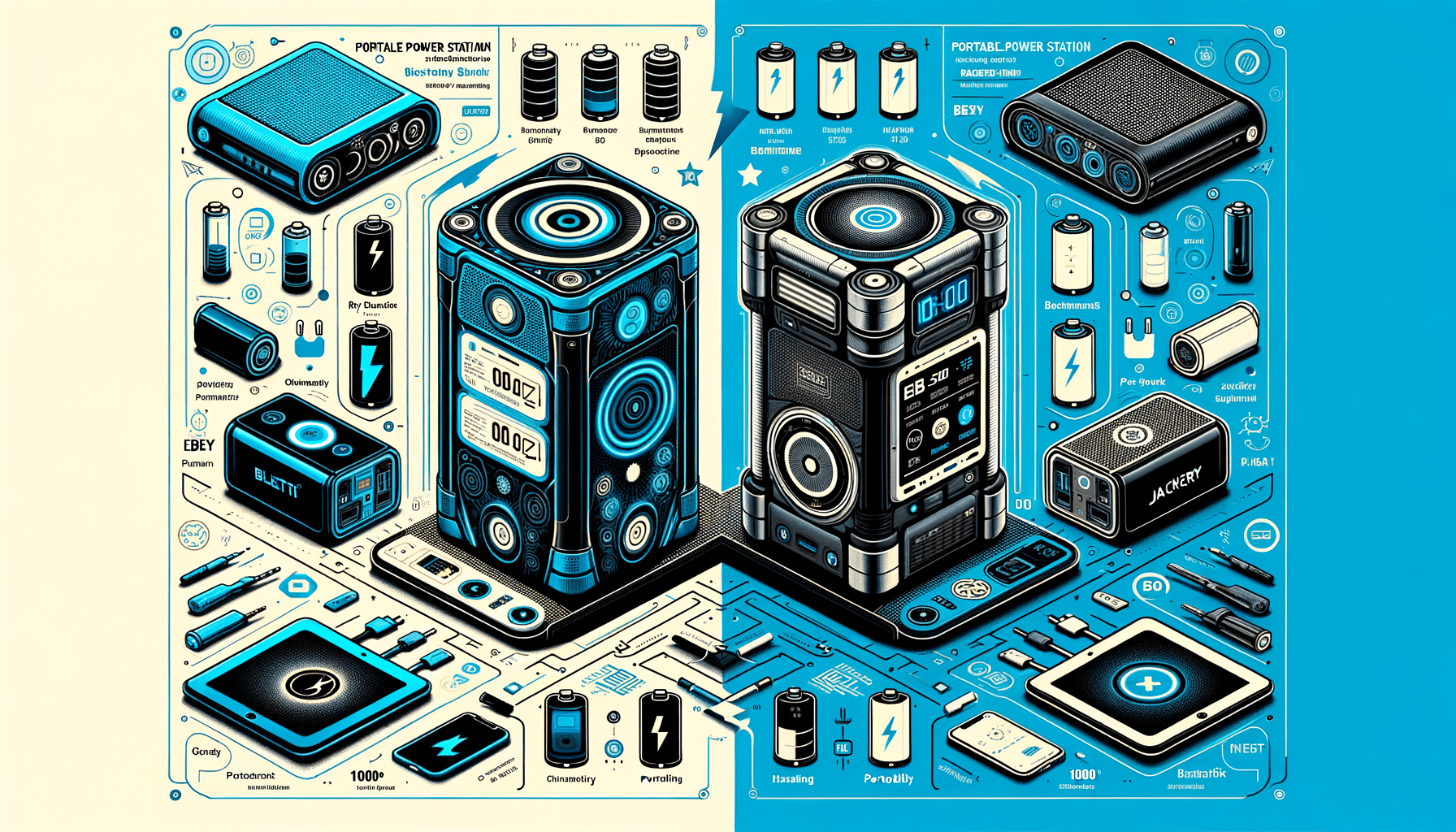Are you in the market for a reliable portable power station and find yourself torn between the Bluetti EB3A and Renogy 500? Both power stations boast impressive specs, but understanding the nuances can help you decide which is the right fit for your energy needs. In this article, we’ll dive deep into a technical comparison to equip you with the knowledge to make an informed decision.
Specs at a Glance
| Feature | Bluetti EB3A | Renogy 500 |
|---|---|---|
| Capacity | 268.8Wh | 495Wh |
| Weight | 10.14lbs/4.6kg | 16.71 lbs/7.58 kg |
| Dimensions | 10.04 x 7.09 x 7.20in | 12.76 x 8.19 x 9.43 inch |
| AC Outlets | 2 x 120V/5A | 3 Pure Sine Wave AC outlets |
| USB-C Port | 1 x 100W Max | 1 x 100W |
| USB-A Port | 2 x 5V/3A | 1 x 18W Fast Charging, 2 x 12W ports |
| DC Outlets | 3 (including car outlet) | 1 CIG port |
| Solar Input | 200W Max | Compatible with e.flex 220W |
| Recharge Times AC (fastest) | ~1.3-1.8 hours | 1 Hour (iTurbo) |
| Battery Type | LiFePO4 | Lithium-ion |
| Surge Power | 1200W | 1600W |
| Wireless Charging Pad | 15W Max | N/A |
| App Control | Yes | Yes |
| Expansion | N/A | iStack function |

Breaking Down the Tech
Power Capacity and Battery Life
The Bluetti EB3A, with its 268.8Wh capacity and LiFePO4 battery, claims over 2,500 cycles to 80% capacity, making it a resilient companion for frequent users. The Renogy, however, offers a larger 495Wh lithium-ion battery, potentially extending the duration of power supply between charges. Both aim to keep you powered up, but Renogy takes the lead in outright capacity, which could be crucial for those needing extra power for longer periods.
Portability and Design
When it comes to design, both models prioritize portability. The Bluetti EB3A’s compact build at 10.14 pounds is lighter and easier to tote around than the Renogy’s 16.71 pounds. For adventurers who need to move frequently and pack lightly, the EB3A may have the upper hand.
Charging and Solar Input
Charging efficiently is key, and here, Bluetti and Renogy manage to impress. The EB3A’s dual charging capability allows for a total input of 430W, combining AC and solar, providing a rapid boost in about 1.3 hours in Turbo mode. Renogy, with its iTurbo technology, puts power back into your hands quickly with a 1-hour fast charge, but does not support dual charging. Those leaning towards green energy might note that both accommodate solar charging, yet it is the Renogy that seems to slightly edge out with compatibility to a potent 220W e.flex portable solar panel.
Connectivity and Expansion
Staying connected and in control is easier than ever with both the Bluetti EB3A’s and Renogy 500’s app enabled features. Manage your power station from your smartphone for added convenience. Renogy stands out with its innovative iStack function, allowing two PHX500 units to combine for increased energy capacity and output, perfect for growing energy needs.
Safety and Extras
Both units take safety seriously, offering advanced management systems to protect the power station and connected devices. As for extras, the EB3A offers a wireless charging pad, adding to its host of outputs. The Renogy PHX500 doesn’t lag behind, boasting integrated lighting for added versatility in outdoor settings.
Final Thoughts
Both the Bluetti EB3A and Renogy 500 portable power stations hold their ground as excellent choices. For those prioritizing size and weight, the EB3A is more travel-friendly, whereas the Renogy 500 offers more power capacity and expansion potential for demanding energy requirements. Ultimately, your choice comes down to assessing your specific power needs, portability preferences, and budget considerations.



Leave a Reply